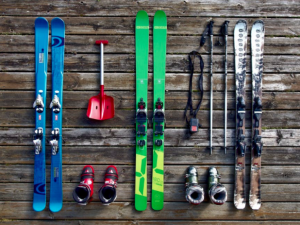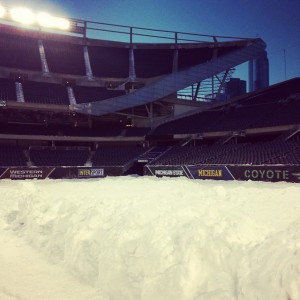Before you head out for the slopes, the ice rink, or just for some good old-fashioned snowshoeing, make sure you’re not heading into a self-made trap. Winter accidents tend to happen mainly because people aren’t prepared for the weather conditions, aren’t physically healthy enough to be doing the thing they’re doing, or because they’re ignorant of how to safely engage in some sport or activity.
Also, icy roads and wintry conditions can lead to dicey and hazardous roads. Accidents abound on frozen highways. You might need to call up a personal injury attorney to help make sure you can achieve the best outcome possible of a really bad situation. This is commonplace in wintertime.
Here’s how to protect yourself.
Wear Wool and Other Warm Clothing
Wearing the proper garments will go a long way toward making sure you make it home without frostbite. A favourite for hikers and skiers is wool – specifically, merino wool. It’s soft, doesn’t itch or irritate the skin, and can be worn multiple days in a row without building up sweat (and stink).
Wool contains a natural oil called “lanolin” which is antimicrobial, water-resistant, and stain-resistant. Wool, as a material, tends to be more robust and strong than cotton in the sense that the wool fibres can be bent more times before they break, causing irreversible fabric damage.
Wool can be made into hats and shirts, and even socks. Most winter-sports enthusiasts use wool for undergarments, like a base-layer shirt, and socks. Some people will go to the extra effort of finding wool underwear or long-underwear.
Get yourself the basics like this, and you’ll stay warm, but dry, since wool also wicks away moisture while retaining strong insulating properties. Cotton, on the other hand, absorbs and holds in moisture.
If you’re really ambitious, you can lanolize your wool, and give it extra protection. Here’s how. Adding lanolin to your wool clothes may be necessary periodically when you wash the item, since it’s possible for the oil to come off over time.
Bring Water and Food
Always bring at least a small amount of water and food with you, just in case you get stranded or stuck somewhere that doesn’t have easy access to these things. Water is especially important, as winter air tends to be very dry (deceivingly so). It doesn’t take much to become dehydrated, even with all of the ice around you.
Good options for food include nuts or nut butters, dried fruit, and jerky or some kind of dried meat. These options provide a good mix of protein, carbs, and high-energy fats that will sustain you for hours, if need be. Nuts and jerky, especially, tend to be very salty, replacing valuable electrolytes.
Protect Your Eyes
Protect your eyes with sunglasses or goggles. Sun reflecting off snow can very easily blind you during ice skating, skiing, or cross-country events. You can also get sunburned from the sun’s rays reflecting off the snow, so it may make sense to bring along some sunscreen if you’re sensitive to the sun.
Use The Proper Equipment
It seems like common sense, but you should always use the appropriate equipment when possible. Going skiing without protection for your head, for example, isn’t smart. Not using skis rated for your weight or experience level is also a bad idea.
And, finally, going outside without proper protective equipment is just asking for trouble.
Stay In Shape During The Off Season
Staying in shape during the off-season will also help you reduce injuries when you do finally go back to your winter activity of choice. To stay in shape, it’s best to choose a combination of strength and endurance training. If you’ve never picked up a barbell before Starting Strength is a great place to start. It will give you basic strength and adaptation through safe barbell movements like the squat, deadlift, and overhead press.
Obey All The Rules Of The Sport and Of the Resort
One of the ways in which people often become injured is by not paying attention to the rules of the sport or the resort they’re visiting. According to the American Academy of Orthopaedic Surgeons, knees, shoulders, and rotator cuff injuries are some of the most common injuries people suffer during the wintertime (while playing sports).
But, you don’t have to be playing a sport to get injured. Many Canadians love their ATVs and snowmobiles, but these can be deathtraps if you’re not following some basic safety rules like never going out past dusk, always wearing appropriate safety gear, and always bringing a cell phone and long-distance radio in case you become stranded.
According to a personal injury lawyer in Ottawa, liability issues can also be complicated after an accident or injury – with insurance company claims and property damage issues being particularly difficult to sort out.
If you’re riding on your own property, for example, and you have guests riding with you, you could be sued if they are injured while snowmobiling – even if you’re also injured. If you’re riding on someone else’s property, and you’re injured, you won’t always have a claim.
When In Doubt, Sit One Out
If you’re ever in doubt about your ability to participate safely in a sport or activity, sit it out. It’s not worth the risk of injury – especially if it’s out on the ice or in a remote location where help is not readily available.
Barbara Meijer worked as a legal secretary for Ottawa-area law firms for 12 years, and currently serves as an advisor and assistant at OttawaInjuryAttorneys.ca. Barbara attended the University of Western Ontario and graduated with honors, receiving a degree in history. She currently resides in Ottawa, Ontario with her husband and daughter.




